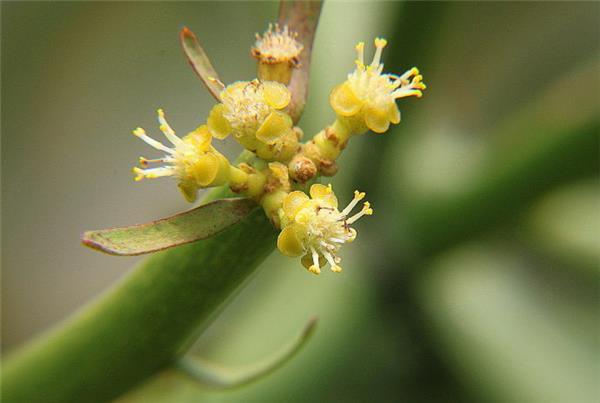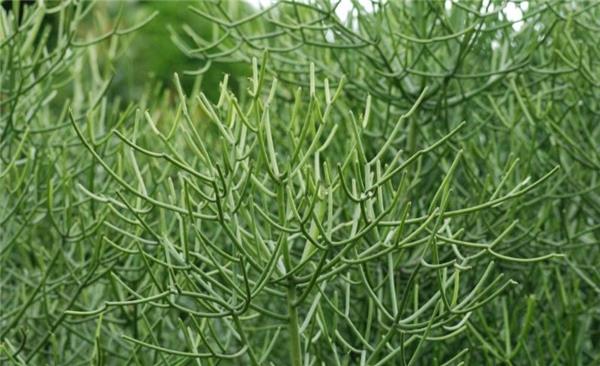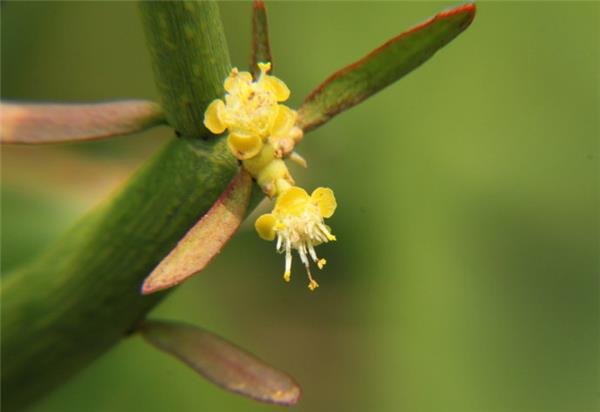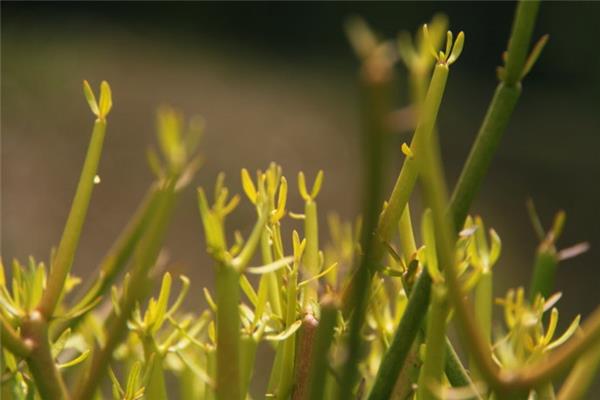What kind of plant is a bachelor tree? is it poisonous?
The shape of the single tree is quite special. It actually looks like coral. There are few flowers on the bare branches, let alone a single leaf. And the juice in its stem is toxic, so why do we breed it?

I. morphological characteristics of bachelorous trees
Single tree (Euphorbia tirucalli) is a succulent plant of Euphorbiaceae, the whole plant seems to be flowerless and leafless, only bare branches, like a stick inserted in the tree, so people jokingly call it "single tree". Erect, with white milk throughout the plant; stems gray or grayish when old, green when young, distally spreading or branched. Branchlets opposite or subwhorled, green, slightly fleshy. Leaves reduced to scalelike, or a few scattered branch ends. Leaves alternate, oblong-linear, 7-15 mm long and 0.7-1.5 mm wide, apex obtuse, base attenuate, entire, sessile or subsessile; often on current year's shoots, sparsely and quickly deciduous; capsule dark brown, hairy, prismatic-triangular, both ca. 8 mm in length and diam. Seeds ovoid, ca. 4 mm in length and diam., smooth; with minute caruncle, flowering and fruiting from July to October, Euphorbia inflorescences blooming from the end of the stem. Adult single trees can reach 2 to 6 meters (it takes decades or hundreds of years), but when they are young, they are small, planted in small flowerpots, and can maintain a small posture for a long time. Because the stem is bald and smooth, it is a relatively strange indoor ornamental stem plant.

II. Culture methods of bachelors
Reproduction: because the rate of flowering and fruiting of single trees is very low, most of them are propagated by cuttings. The single tree is easy to take root in the warm climate. 2 segments of the stem are taken as cuttings and cut in the warm season from May to June. After taking root, the single tree can be planted in a flowerpot of 10-15 cm.
Potted soil: soil suitable for good drainage. It is advisable to choose the rotten leaf soil of 2 and 3 and the garden soil of 1 and add a small amount of river sand as the culture soil, and the basin bottom can put a little long-acting fertilizer such as hooves as base fertilizer. In order to facilitate drainage, the bottom of the basin should also be covered with some gravel or tiles.
Temperature: the suitable temperature for the growth of single trees is 25-30 ℃, so they can be cultivated in open fields in the warm regions of the south and in greenhouses in the Yangtze River basin and its north. Single trees are usually cultivated in greenhouses in winter and in the open air in summer.
Turn the basin: single trees usually come out of the greenhouse in late April, turn the basin once in 1-2 years, and replace it with new loose sandy loam.
Water and fertilizer: single trees are resistant to drought, do not water too much during maintenance, each watering should be after the soil is fully dry, and fertilize once every semimonthly.
Diseases and insect pests: the main diseases of single trees are charcoal disease and leaf spot disease, which can be sprayed with 1000 times of methyl topiramate wettable powder. The indoor ventilation is poor, and the stems and leaves are vulnerable to shell insects. They are sprayed with 1000 times of omethoate emulsion. When watering too much, it is easy to cause root rot, leaves will turn yellow, and even gray mildew spots will rot. Attention should be paid to ventilation and drainage, and carbendazim wettable powder can be sprayed to prevent and cure it if necessary. In addition, there can also be pink scale damage leaves, the formation of white wax powder, should be timely elimination of diseases and insect pests leaves to prevent spread.

Third, is the bachelor tree poisonous
1. The white milk of single trees is highly poisonous. Special care should be taken when viewing or cultivating. Do not let milk into people's mouth, ears, eyes, nose or wounds. The poisonous milk of single trees can protect the trees from viruses and pests.
two。 The milk of single tree can promote tumor growth and cause cancer by promoting chromosome rearrangement of human lymphocytes; stimulating the skin can cause redness and swelling, and accidentally entering the eye can cause temporary blindness.
3. Toxic pharmacology: bachelor tree herbal medicine, cool, pungent taste, slightly sour. It is mainly used to treat postpartum milk deficiency, tinea sore and joint swelling and pain of pregnant women. The whole plant contains toxic lotion. The emulsion can be used as emetic and laxative, but irritating strong skin contact can cause skin inflammation, redness, itching and pus, and has an antibacterial effect on Staphylococcus aureus.

Although the name of single tree is not good, but after reading the above introduction, it is not difficult to find that it is more suitable for breeding at home, because it has a unique ornamental value. However, in the process of breeding, we must pay attention to good protective measures, especially friends with old people and children at home should be very careful to avoid the danger of accidental eating.
- Prev

[Golden branches and jade leaves flowers] points for attention in the culture of golden branches and jade leaves
[Golden branches and jade leaves flowers] points for attention in the culture of golden branches and jade leaves
- Next

[can pregnant women eat parsley?] how about cilantro?
[can pregnant women eat parsley?] how about cilantro?
Related
- Wuhan Hospital Iron Tree Blooming Result Was Instantly Frightened by the Gardener Master
- Which variety of camellia is the most fragrant and best? Which one do you like best?
- What is the small blue coat, the breeding methods and matters needing attention of the succulent plant
- Dormancy time and maintenance management of succulent plants during dormancy
- Minas succulent how to raise, Minas succulent plant pictures
- What are the varieties of winter succulent plants
- How to raise succulent plants in twelve rolls? let's take a look at some experience of breeding twelve rolls.
- Attention should be paid to water control for succulent plants during dormant period (winter and summer)
- Watering experience of twelve rolls of succulent plants
- Techniques for fertilizing succulent plants. An article will let you know how to fertilize succulent plants.

